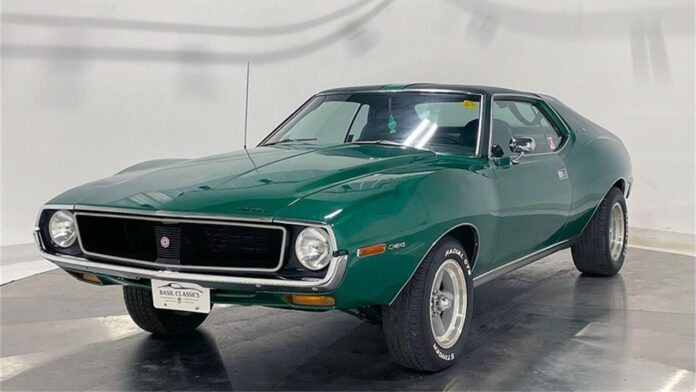Nineteen seventy-one was a good year to be a pony car fan. The whole market was packed with debuts or pony cars that were a year old or less. It was an ironic time because manufacturers modernized their pony car models while the specialty car market was shrinking rapidly—in fact, General Motors considered discontinuing its F-bodies after poor 1972 sales. Chrysler and AMC did just that after 1974, the same year the Mustang evolved into a compact and the Cougar became an intermediate.
So, in a fresh market, which one would you have bought? Here’s the run-down for pony car fans. (Click on the captions to view the cars for sale.)
AMC
After three years of Javelins and AMXs, AMC came back with a redesigned Javelin that in reality was a heavily restyled version of the previous-generation car. The two-seater AMX was now gone, reconfigured to be a performance package for the Javelin. Like the new Mustang, the Javelin seems to have been influenced by contemporary race cars of the time, with exaggerated front wheel arches and rear haunches that gave the it a broad-shouldered look. An integrated roof spoiler was an evolution of an accessory that was introduced in the middle of the 1969 model year.
Mark Donohue, AMC’s Trans-Am driver, assisted with several styling features, especially the Javelin AMX’s grille cover, a flat mesh overlay covering the Javelin’s inset grille. The Javelin AMX also came with a cowl-induction hood that was functional with the Go Package.
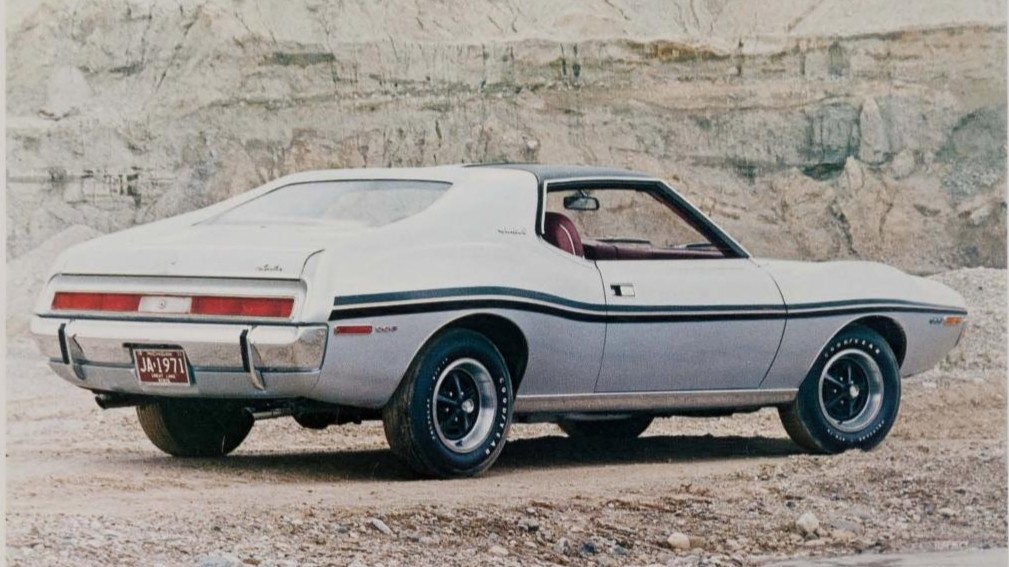
Under the hood, things started to get interesting with the 360 four-barrel, a carry-over from 1970. The 390, a popular engine for 1968-70 models, evolved into the 330-horse 401 for 1971. This would be the biggest motor ever installed in an AMC pony car.
Chevrolet
The redesigned Camaro debuted mid-year 1970, so there were only a few detail changes for 1971. As the most European-influenced of the new wave of pony cars (aside from the heavy doors), the Camaro’s fuselage-like body appeared lower and leaner despite having the same wheelbase and length as the previous generation. Even with the abbreviated 1970 model year, there were enough changes for 1971 to give the Camaro its own unique flavor, such as high-back bucket seats, a three-piece D80 spoiler (previously a 1970 COPO item), new mag wheels, and new colors. As before, there were two flavors of Camaro, with the base receiving a conventional front bumper while the Rally Sport featuring minimalist front bumperettes and a grille surrounded by the Endura material made famous by the post-1967 Pontiac GTO. The performance Super Sport continued, but by now, the Z/28 was encroaching on its popularity.
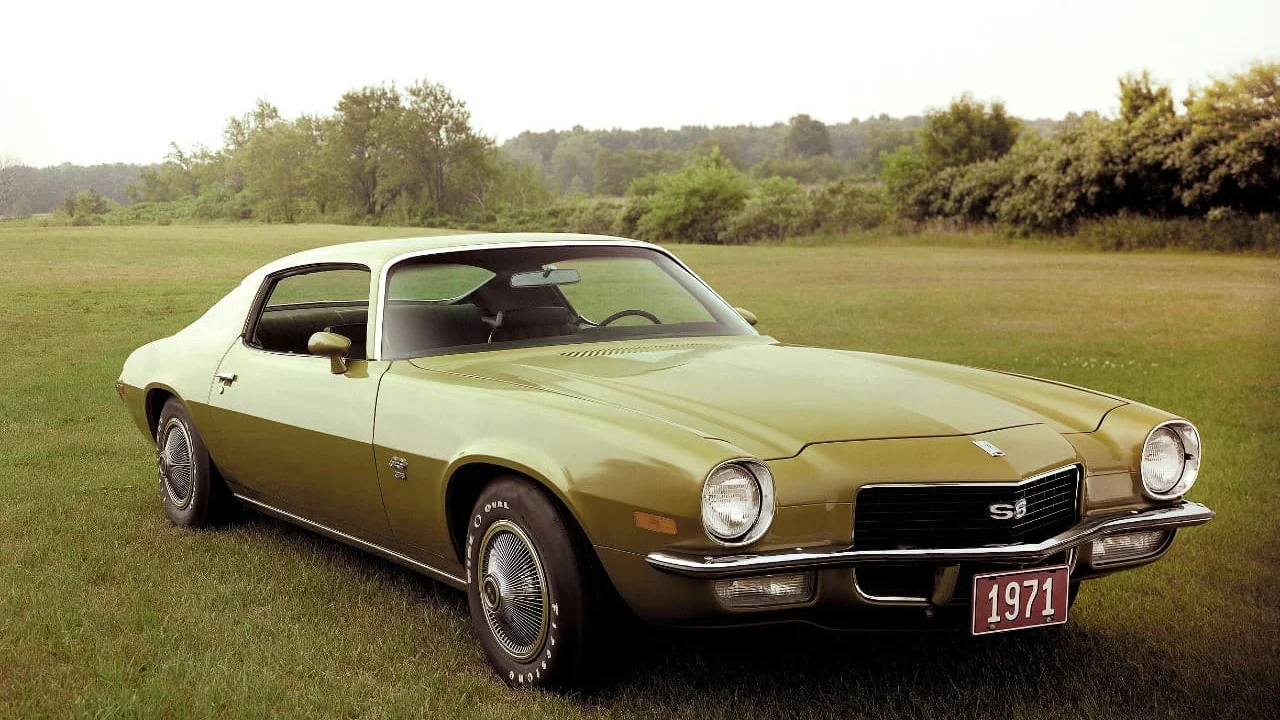
Compression was lowered across the board at GM for 1971, so the base SS 350 put out 270 horsepower, down from 300; the SS 396 was only available as a 300-horse 402, down from 350 (with the solid-lifer L78 now being a memory). The Z/28 with its LT1 350 was down from 360 to 330 horsepower, but now, for the first time, it was the most powerful Camaro.
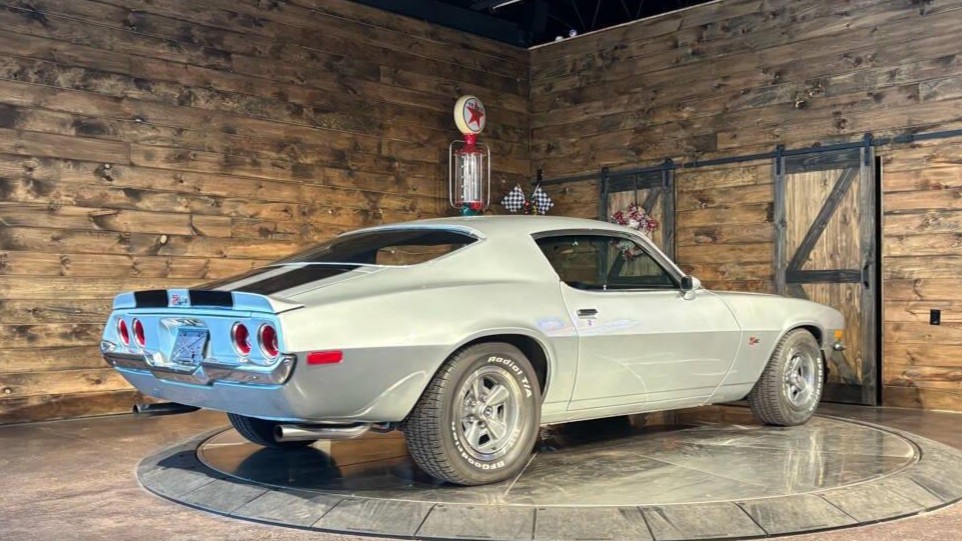
The Camaro may have been the most revolutionary of the new-gen pony cars in its time, but its popularity as a collector car follows the first-gen Camaro. It’s the second gen’s duration—1970 through 1982—that has maintained its popularity, but aside from the Z/28, the 1971 Camaro doesn’t seem to arouse as much interest beyond it being a Chevrolet, which means it’s still strong.
Dodge
With the introduction of the Challenger in 1970, Dodge finally had a serious pony car contender and, if sales are a reflection, the Challenger did pretty well. However, it was a case of too little, too late as performance and specialty car sales were headed downward. You wouldn’t have been able to tell just by looking at the 1971 Challenger as it was practically a rerun from 1970.
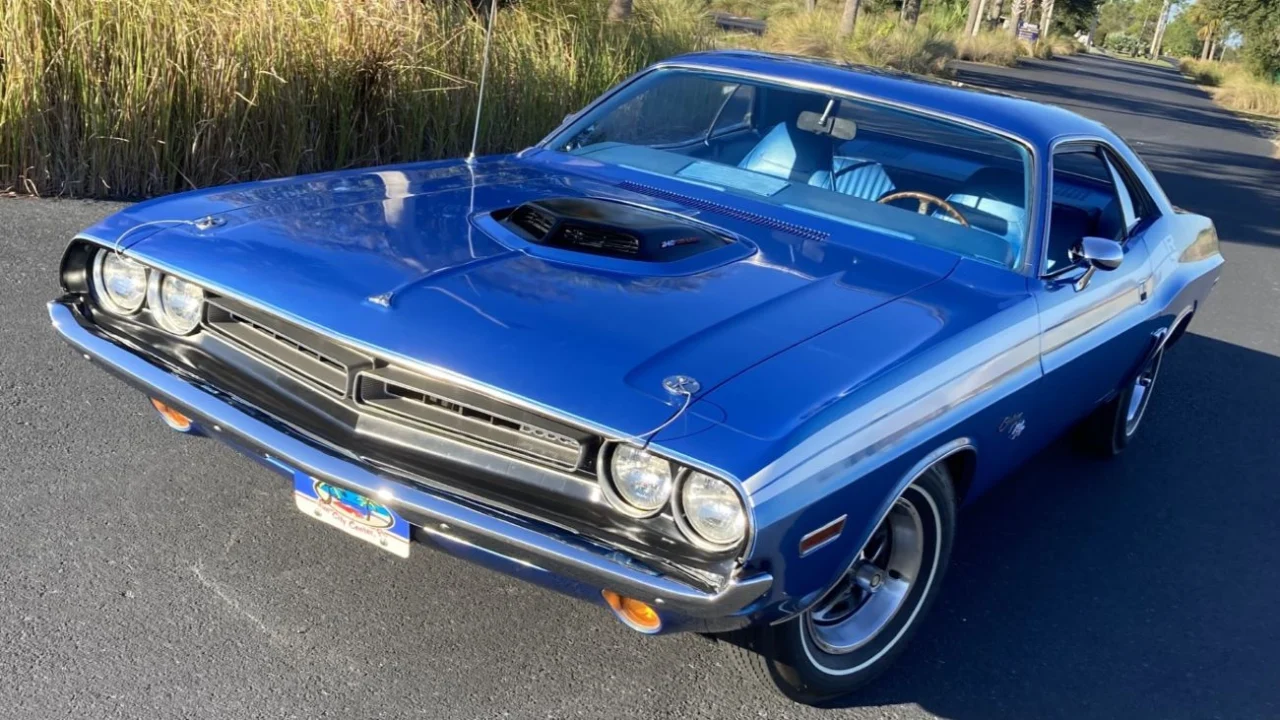
New for 1971 was a two-piece plastic grille that replaced the one-piece wide-mouth grille; the design was mimicked out back by the taillights. Stripes for the R/T (optional on the base Challenger) ran above the character line, from under the C-pillar and down to the nose; black and white were popular color choices, but fluorescent lime and orange were also available. Unlike all the other pony cars, the Challenger was stubby like a ’69 Camaro instead of lean like a ’70 Camaro, but it didn’t suffer because of that.
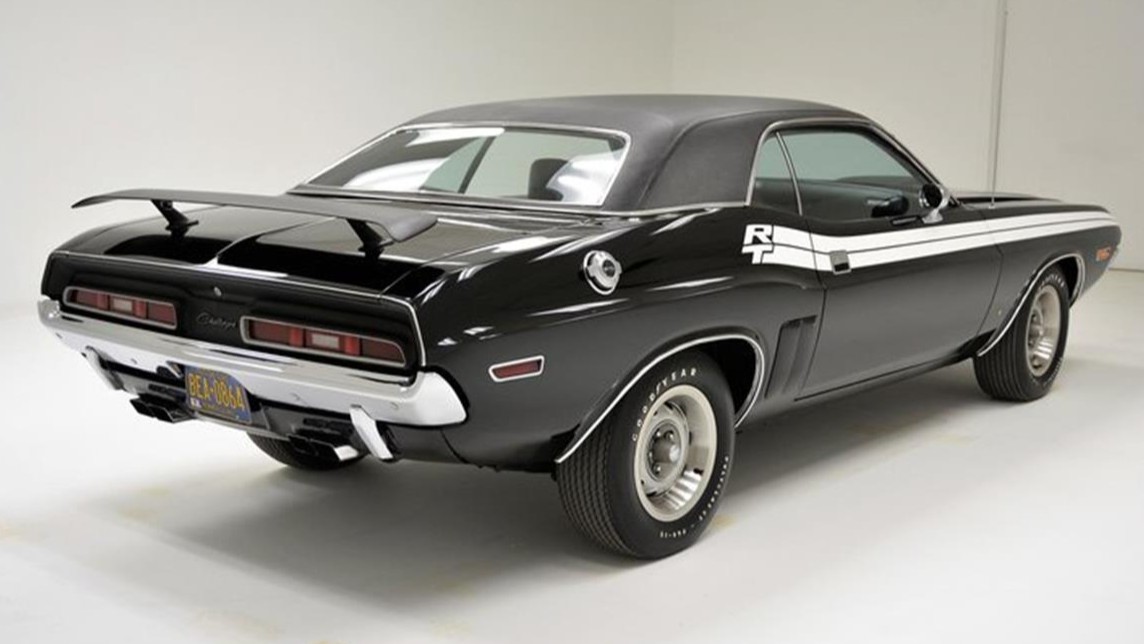
The standard motor for the R/T was a 383, now rated at 300 horsepower. The 340 was a new option (though it continued to be available on the base Challenger), and then the next steps up were the 440 Six Pack and 426 Hemi, with the 340 Six Pack (Challenger T/A) and 440 Magnum disappearing from the options list. Despite the new features, Challenger sales were down drastically—by more than half.
Ford
The Mustang was all-new for 1971. There were two performance models: Mach 1 and Boss 351, both only available as a SportsRoof fastback, but of course, the coupe and convertible continued to be available. The Mustang grew in wheelbase, length, and weight, but its styling and design—especially the performance models—appeared to be shaped by a combination of “Total Performance” racing exploits and the 1969-70 Shelby Mustangs. For the performance models, NASA-type scoops replaced both the non-functional and Shaker scoops (though the hood was a no-cost option for the 1971 Mach 1 with the standard 302). Optional racing stripes were bigger and badder than before, now available in black or silver.
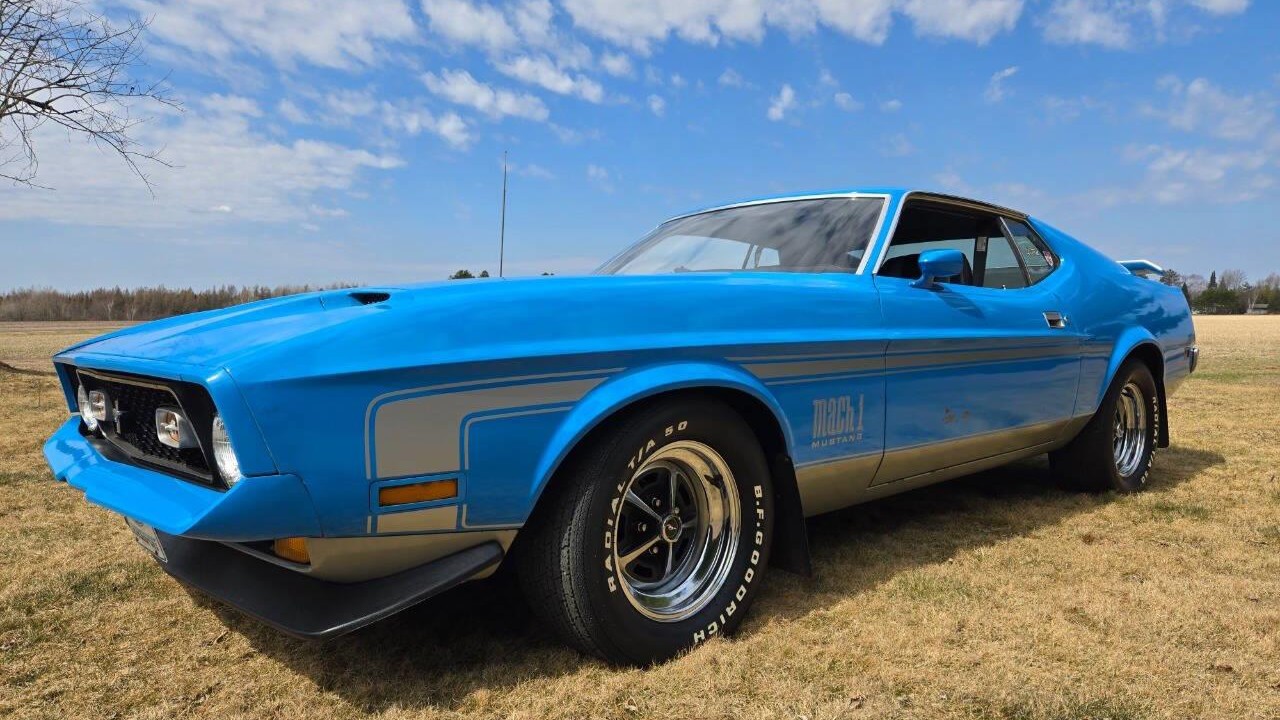
Sure, the Mach 1’s standard engine was a demotion, but things started to get interesting with the “M-code” 351 Cleveland which, at 285 horsepower, was down 15 from 1970. Offered mid-year (and quite rare) was the 280-horse “Q-code” 351 Cobra Jet, a low-compression version of the Cleveland four-barrel that would eventually become the default performance motor for 1972-73. The next step up was the new-for-Mustang 429 Cobra Jet, available with or without air induction (J- and C-code, respectively). Want digger gears? Add the Drag Pack, which turned the CJ into a Super CJ. Included with the Drag Pack was a tougher bottom end, solid-lifter bumpstick, Holley carb, and 4.11 or 4.30 gears—the latter with a Detroit Locker.
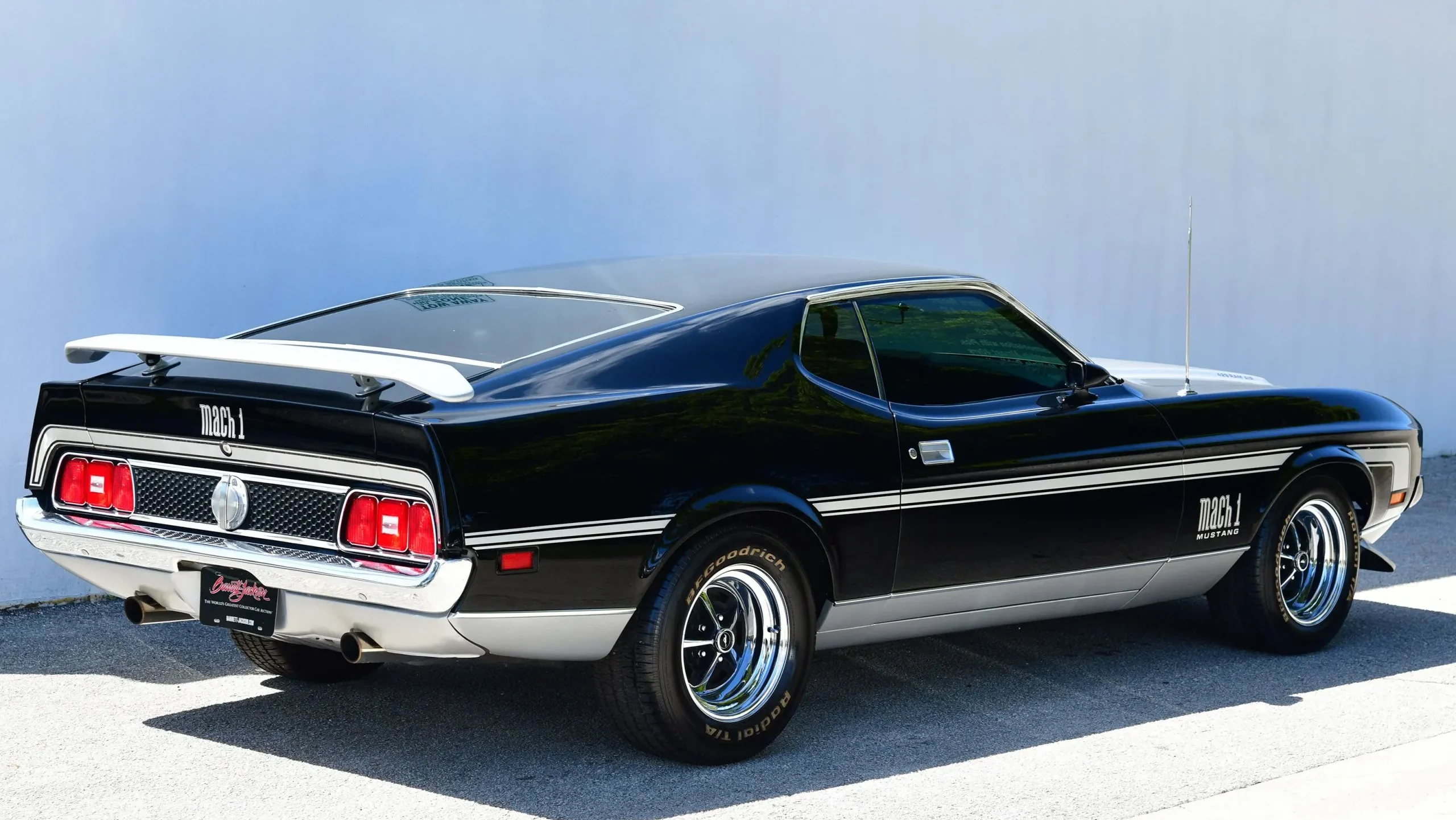
But arguably, the best of the performance Mustangs was the Boss 351. Looking like the Mach 1 in most respects, the Boss was powered by a 330-horse 351 and is often considered the fastest small-block of the era. Some even think it’s faster than the 429 CJ.
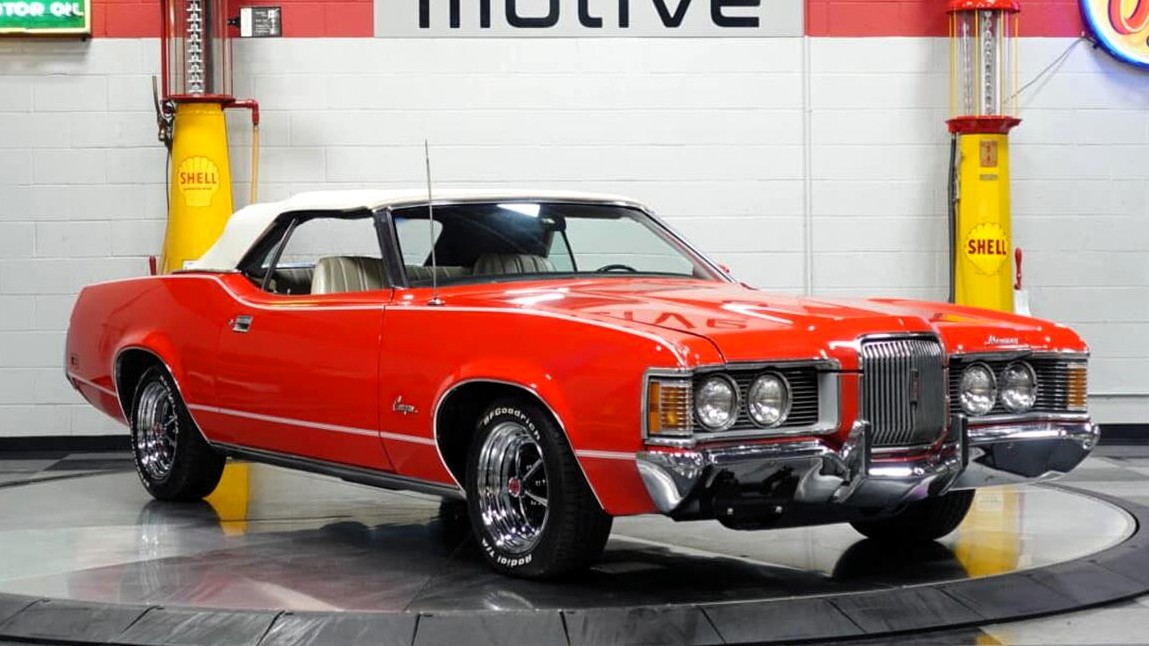
Mercury
Like the Mustang, the Cougar was all-new for 1971. However, the Cougar leaned even more into the personal luxury segment, losing any semblance of sportiness that it had before. Gone was the performance-oriented Eliminator package, but a new GT package added a hood scoop (only functional with the 429 CJ with ram air induction), a tach, and Competition Suspension. As before, there was the base Cougar and high-line XR-7.
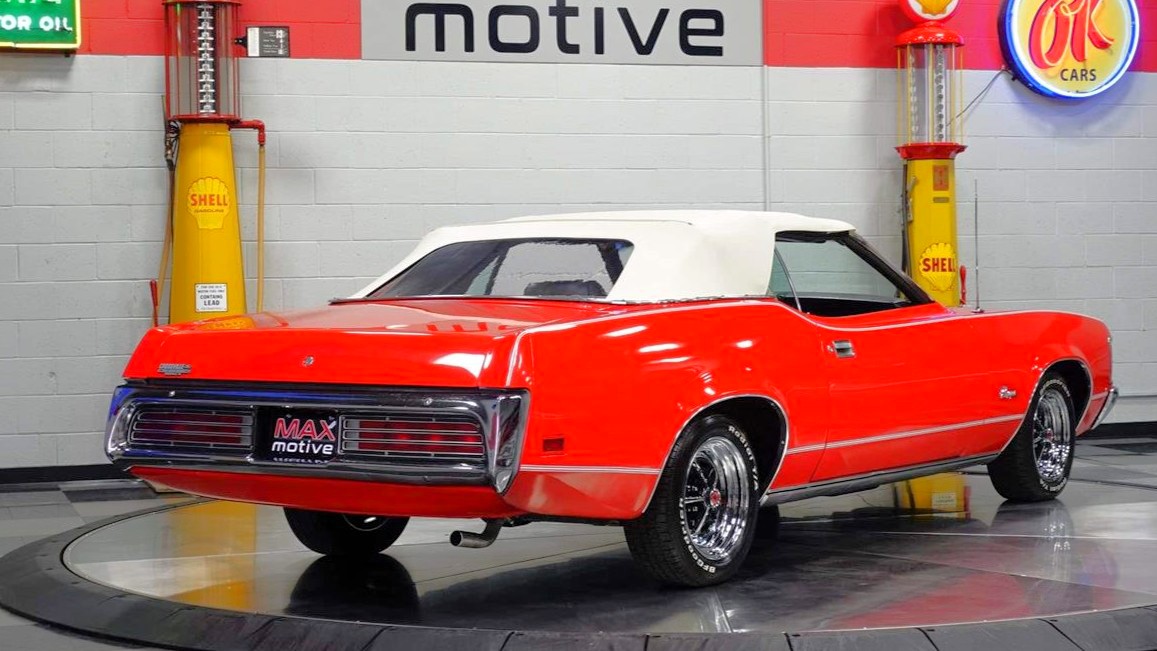
Motor choices were similar to those for the Mustang, but the Cougar’s standard engine was a 351 two-barrel. The 351 four-barrel and both 429 Cobra Jets were available, although the Drag Pack was not. When equipped with air induction, 429 cars received the same hood scoop as GTs.
Plymouth
Like the Challenger, the Barracuda was all-new for 1970, but the 1971 facelift brought quad headlights that gave the pony car a different look. At the time, the buff books hated it (and sales tanked, just like the Challenger’s), but in today’s collector world, the 1971 Barracuda is the premiere muscle car out of all brands and years. Like the Challenger, the Barracuda featured proportions similar to those of the first-gen Camaro, though slightly evolved and exaggerated.
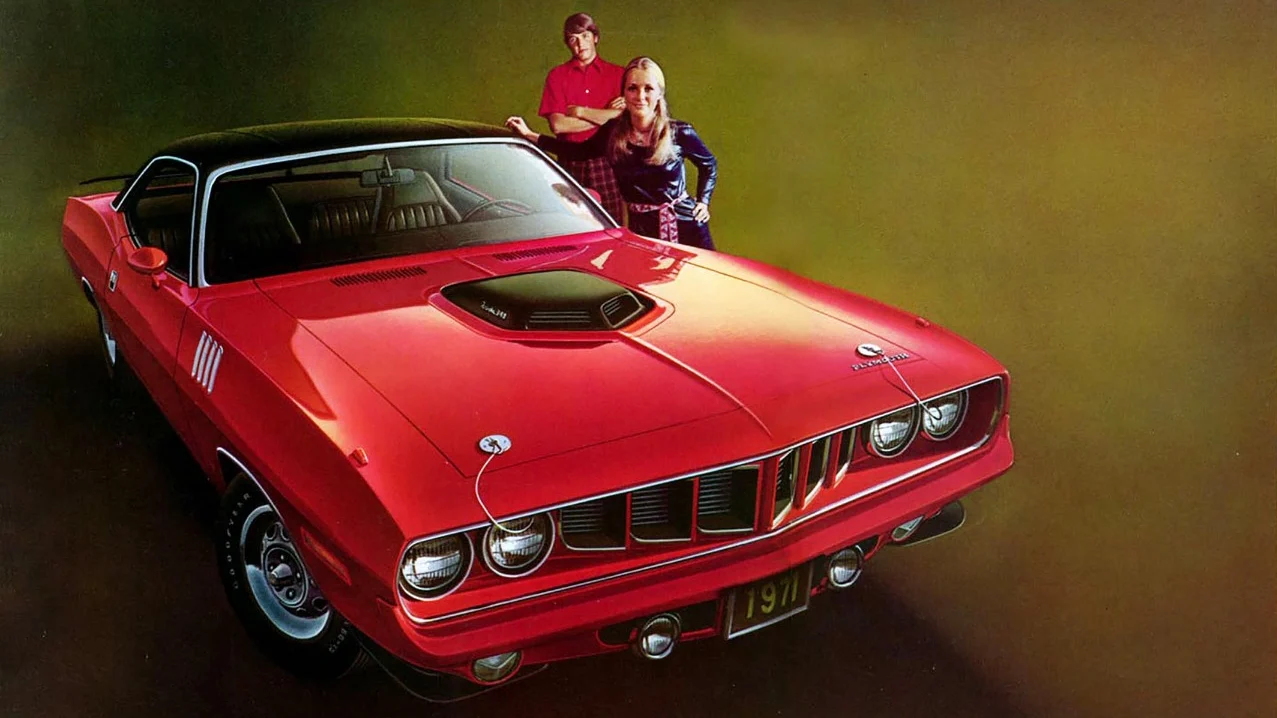
Several options could make the Barracuda the wildest-looking car on the market. For example, if you ordered one in “EV2” Tor Red, “FC7” In Violet, “GB5” Blue Fire, “FE5” Rallye Red, “GY3” Curious Yellow, “FJ6” Sassy Grass Green, “GW3” Sno White, “GK6” Autumn Bronze, or “GF7” Sherwood Green, you’d receive a color-keyed grille; six of those colors could be paired with Elastomeric bumpers (front or front/rear) to add to the monochromatic look. Additional eye candy included front and rear spoilers, rear window louvers, and the mighty “Billboard” stripes (black or white).

Engine choices were like the Challenger’s, but the outrageousness of the ‘Cuda with a certain combination of trim options, combined with the Hemi and the availability of a top that goes down, makes it the top car in the muscle car hobby.
Pontiac
The Camaro’s sibling, the Firebird, also had a mid-year 1970 introduction. Minimal changes followed for 1971, such as fake air extractors on the front fenders for the base Firebird, Esprit, and Formula; high-back seats; new wheels (especially the polycast Honeycombs); and new colors. The big news was under the hood, as Pontiac had to make do with low-compression motors.

The Formula was the popular model that would capture the interest of the performance masses. For 1970, a 400 was available in two states of tune, but for 1971, the Formula model expanded to include a tepid 350 and two 455s in addition to one 400. The latter was the first step towards performance, featuring 300 horsepower, but 325 was available with the 455 four-barrel, which was new for the Firebird. Still not enough? For 10 horsepower more, the 455 HO was available, which combined the round-port heads from the previous year’s Ram Air IV with the big-bore 455. Despite the reduction in compression compared with 1970’s motors, it was quite possibly the strongest of GM’s low-compression engines save the LS6 454, which was only available on the Corvette.
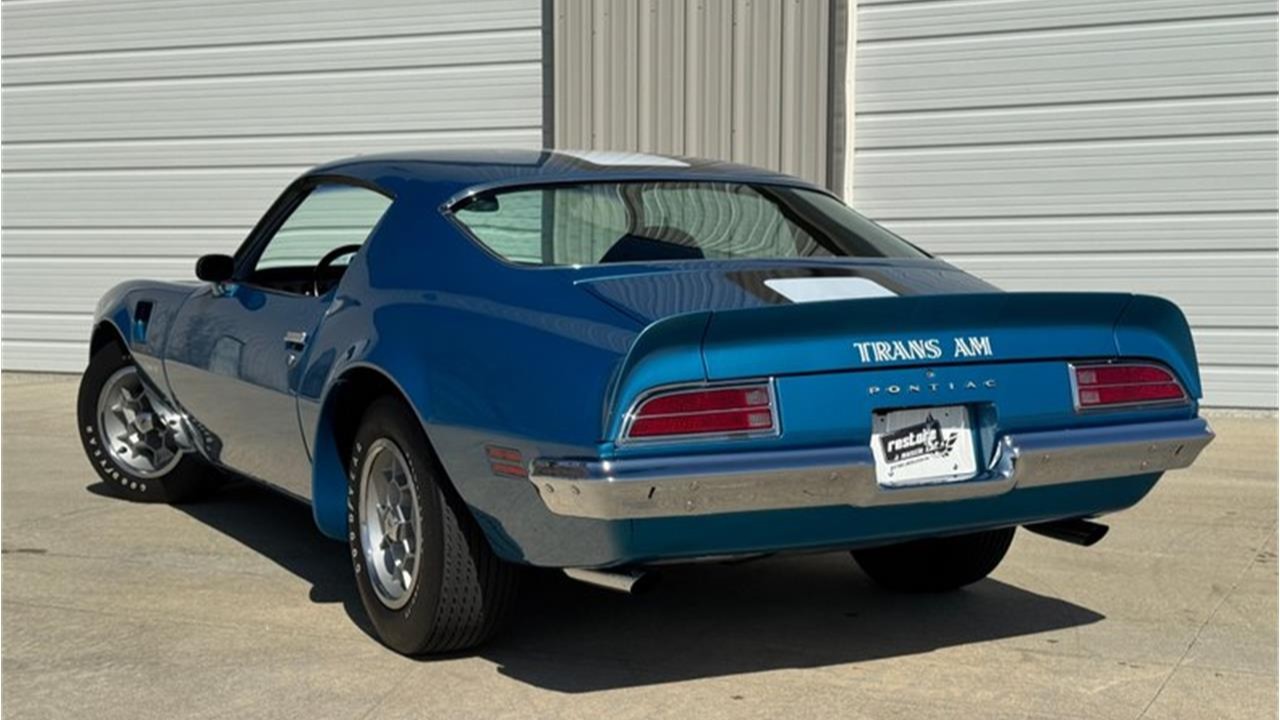
And if this was the motor you desired, perhaps you’d consider the Trans Am, which came with the 455 HO standard. The spoiler-ed and air-dammed race car for the street was back for ’71, still available in white/blue or blue/white.
Out of all the 1971 pony cars, which one would you pick? It’s a difficult choice. A Grabber Blue Boss 351 looks racy, while a SportsRoof with the 429 has street-bruiser appeal, but I think I prefer others. The Firebird Formula 455 is a great street car, capable of using today’s gas, but it’s almost too adult for me as I’m currently not in that mood. A Curious Yellow ‘Cuda fits my mood more, a visual masterpiece that was out of fashion at the time. However, I have had a certain fascination with the Challenger R/T, fantasizing about it painted “GA4” Light Gunmetal metallic with “V6V” fluorescent orange stripes and “H5X9” black vinyl and orange/black cloth buckets. Was one ever built like that?


